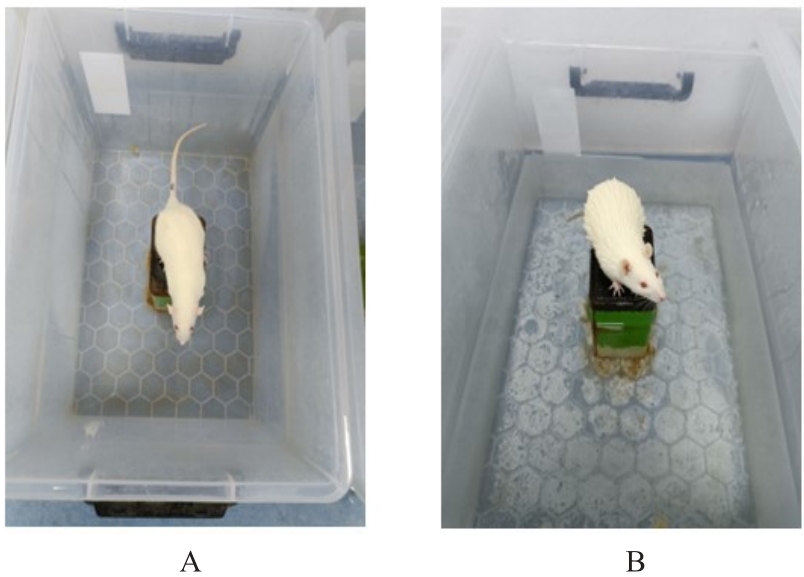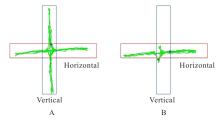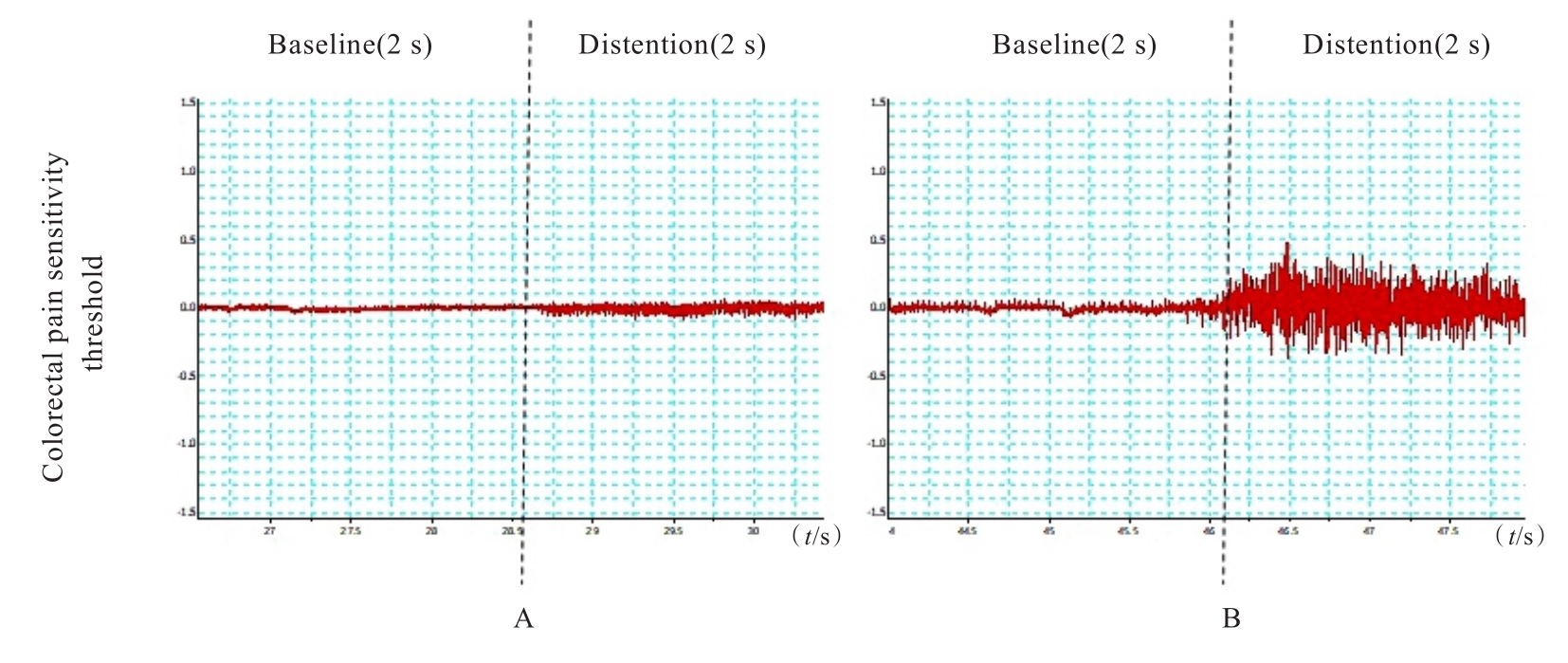| 1 |
MAYER E A, RYU H J, BHATT R R. The neurobiology of irritable bowel syndrome[J]. Mol Psychiatry, 2023, 28(4): 1451-1465.
|
| 2 |
DROSSMAN D A. Functional gastrointestinal disorders: history, pathophysiology, clinical features and Rome Ⅳ[J]. Gastroenterology, 2016. DOI: 10.1053/j.gastro.2016.02.032 .
doi: 10.1053/j.gastro.2016.02.032
|
| 3 |
WU J, CHENG Y, ZHANG R, et al. P2Y1R is involved in visceral hypersensitivity in rats with experimental irritable bowel syndrome[J]. World J Gastroenterol, 2017, 23(34): 6339-6349.
|
| 4 |
管 洁, 邓 娜, 蔺晓源, 等. 腹泻型肠易激综合征及其中医病证结合动物模型的研究进展[J]. 中医药信息, 2023, 40(5): 73-78.
|
| 5 |
杨清瑞, 胡泽玉, 杜晓泉, 等. 腹泻型肠易激综合征中医病证结合动物模型研究[J]. 中国中医基础医学杂志, 2021, 27(12): 1981-1984.
|
| 6 |
JOHNSON A C, FARMER A D, NESS T J, et al. Critical evaluation of animal models of visceral pain for therapeutics development: a focus on irritable bowel syndrome[J]. Neurogastroenterol Motil, 2020, 32(4): e13776.
|
| 7 |
赵迎盼, 唐旭东, 卞兆祥, 等. IBS-D肝郁脾虚型病证症结合大鼠模型的建立与评价的初步研究[J]. 中国中西医结合杂志, 2013, 33(11): 1507-1514.
|
| 8 |
MAYER E A, BRADESI S, CHANG L, et al. Functional GI disorders: from animal models to drug development[J]. Gut, 2008, 57(3): 384-404.
|
| 9 |
张 方, 翁志军, 吴璐一, 等. 病因相关肠易激综合征动物模型研究进展[J]. 世界华人消化杂志, 2018, 26(30): 1772-1777.
|
| 10 |
TRAINI C, IDRIZAJ E, GARELLA R, et al. Otilonium Bromide treatment prevents nitrergic functional and morphological changes caused by chronic stress in the distal colon of a rat IBS model[J]. J Cell Mol Med, 2021, 25(14): 6988-7000.
|
| 11 |
HONG K B, SEO H, LEE J S, et al. Effects of probiotic supplementation on post-infectious irritable bowel syndrome in rodent model[J]. BMC Complement Altern Med, 2019, 19(1): 195.
|
| 12 |
曾 威, 奚庆华, 吴至久男. 肠易激综合征动物模型的研制现状和进展[J]. 现代医药卫生, 2016, 32(17): 2658-2661.
|
| 13 |
贺 星, 刘 卫, 唐 郡, 等. 腹泻型肠易激综合征动物模型建立及评价[J]. 胃肠病学和肝病学杂志, 2020, 29(12): 1386-1390.
|
| 14 |
王 宁, 纪昌春, 万 鹏, 等. 病证结合模式下腹泻型肠易激综合征实验动物模型的研究进展[J]. 天津中医药大学学报, 2021, 40(4): 533-538.
|
| 15 |
吴嫣然. 痛泻要方对慢性应激导致的内脏高敏感和肠道动力异常的作用及机制研究[D]. 武汉: 华中科技大学, 2016.
|
| 16 |
胡 莹, 郑依玲, 梅全喜, 等. 痛泻要方破壁饮片对慢性避水应激大鼠内脏高敏感性的调节作用[J]. 中药新药与临床药理, 2021, 32(3): 322-331.
|
| 17 |
何苏月, 马卓琳, 范昕然, 等. 机械敏感性离子通道Piezo1参与慢性避水应激肠易激综合征大鼠内脏高敏感性和5-羟色胺代谢异常[J]. 中国病理生理杂志, 2021, 37(4): 577-585.
|
| 18 |
余 光, 全晓静, 唐勤彩, 等. P物质与慢性应激诱导的大鼠结肠动力紊乱的关系及其机制[J]. 武汉大学学报(医学版), 2016, 37(3): 407-410.
|
| 19 |
MAYER E A, NALIBOFF B D, CHANG L, et al. V. Stress and irritable bowel syndrome[J]. Am J Physiol Gastrointest Liver Physiol, 2001, 280(4):G519-G524.
|
| 20 |
白 涛, 宋 军, 侯晓华. 神经调控通路在肠易激综合征内脏高敏感发病机制中作用的研究进展[J]. 胃肠病学, 2016, 21(6): 362-365.
|
| 21 |
CAO G P, GUI D, FU L D, et al. Anxiolytic and neuroprotective effects of the Traditional Chinese Medicinal formulation Dan-Zhi-Xiao-Yao-San in a rat model of chronic stress[J]. Mol Med Rep, 2016, 14(2): 1247-1254.
|
| 22 |
黄海阳, 冼绍祥, 杨忠奇. 温胆片对高架十字迷宫实验大鼠脑组织神经递质GABA、Glu含量的影响[J]. 中药新药与临床药理, 2015, 26(5): 631-635.
|
| 23 |
YANG J M, XIAN Y F, IP P S, et al. Schisandra chinensis reverses visceral hypersensitivity in a neonatal-maternal separated rat model[J]. Phytomedicine, 2012, 19(5): 402-408.
|
| 24 |
TAO E F, LONG G, YANG T, et al. Maternal separation induced visceral hypersensitivity evaluated via novel and small size distention balloon in post-weaning mice[J]. Front Neurosci, 2022, 15: 803957.
|
| 25 |
GUARINO M P, BARBARA G, CICENIA A, et al. Supernatants of irritable bowel syndrome mucosal biopsies impair human colonic smooth muscle contractility[J]. Neurogastroenterol Motil, 2017, 29(2): 1-9.
|
| 26 |
SZUCS K F, NAGY A, GROSZ G, et al. Correlation between slow-wave myoelectric signals and mechanical contractions in the gastrointestinal tract: advanced electromyographic method in rats[J]. J Pharmacol Toxicol Methods, 2016, 82: 37-44.
|
| 27 |
SHAFIK A, EL-SIBAI O, SHAFIK A A, et al. Electric activity of the colon in irritable bowel syndrome: the ‘tachyarrhythmic’ electric pattern [J]. J Gastroenterol Hepatol, 2004, 19(2): 205-210.
|
| 28 |
MAZURAK N, SEREDYUK N, SAUER H, et al. Heart rate variability in the irritable bowel syndrome: a review of the literature[J]. Neurogastroenterol Motil, 2012, 24(3): 206-216.
|
| 29 |
LIU Z M, CHEN T, WEI K M, et al. Similarity changes analysis for heart rate fluctuation regularity as a new screening method for congestive heart failure[J]. Entropy, 2021, 23(12): 1669.
|
| 30 |
苏晓兰, 魏 玮. 肠易激综合征动物模型研究进展[J]. 山东中医杂志, 2013, 32(2): 133-135.
|
| 31 |
任 杰, 陆 敏. 肠易激综合征动物模型的研究进展[J]. 中国医药导报, 2016, 13(27): 47-50.
|
| 32 |
刘新明, 刘斯文, 刘书芹, 等. 病证结合的肠易激综合征动物模型研究进展[J]. 吉林中医药, 2022, 42(1): 116-119.
|
 ),Chuwen FENG1,5,6,Tiansong YANG1,5,6(
),Chuwen FENG1,5,6,Tiansong YANG1,5,6( )
)









